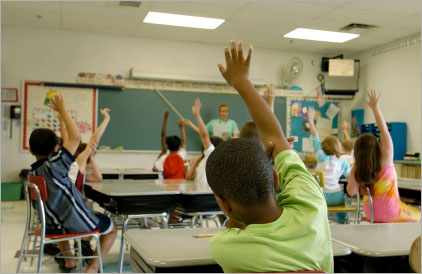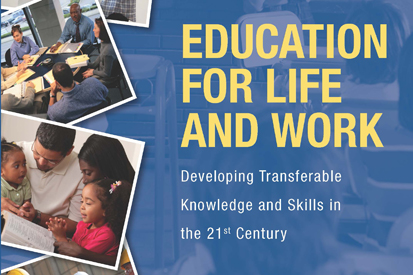Children in K-12 schools in the United States need to learn not just the three Rs, but also focus more closely on how to transfer those skills to a workplace, says a new study. Researchers explain why they think a formula of learning academics by way of learning to govern themselves and work with others will spell more grown-up success for more students.
 Those three areas are called “domains of competence” in the lingo of the Education for Life and Work report issued this month by the National Research Council. Broadly, kids need academics from reading all the way to analysis. And they need to know how to take care of themselves in ways like setting a schedule, being good citizens and having grit. Finally, they need to know what to do with other people, such as collaborate or negotiate.
Those three areas are called “domains of competence” in the lingo of the Education for Life and Work report issued this month by the National Research Council. Broadly, kids need academics from reading all the way to analysis. And they need to know how to take care of themselves in ways like setting a schedule, being good citizens and having grit. Finally, they need to know what to do with other people, such as collaborate or negotiate.
All those together make up “21st century skills,” which are obtained by “deeper learning,” both terms tackled by the NRC’s Committee on Defining Deeper Learning and 21st Century Skills.
“There is a lot of interdependence between the content knowledge we hold dear and these 21st century skills,” said Kent McGuire, president of the nonprofit Southern Education Foundation and member of the NRC committee. For example, learning a modern language also requires the somewhat softer skills of self-discipline and scheduling for many hours of study, or talking with another language student.
“These things aren’t independent of one another,” he said. “It means we need to value both.”
Or take a history class, suggested James Pellegrino, of the Learning Sciences Research Institute at the University of Illinois-Chicago and NRC committee chair.
“When you and I went to school, history was about a received interpretation.” It was facts and figures inserted in a timeline. But the 21st century skills approach gives kids primary documents from the time and teaches them about the authors of the documents. “We need to look at who’s interpreting, what’s the bias” in historical works, he said, “so we can learn to evaluate bias in newspapers or TV,” for example.
Students learn about both academic and professional topics by engaging with it the way professionals do under the 21st century system described in the report. Students break into small groups to tackle a particular problem in biology, welding, whatever the topic is, just as practitioners do at a job site or lab. That practice, the theory goes, better prepares the student for the job site, lab, office, anywhere they land.
 “The factory model we have now,” McGuire explained, “is the wrong model to get all kids or a substantial number of kids to a deeper level of understanding.”
“The factory model we have now,” McGuire explained, “is the wrong model to get all kids or a substantial number of kids to a deeper level of understanding.”
He charges that today’s academic system results in a predictable bell curve under which only a few students, by definition, can reach the far right tail of success.
The 21st century approach already happens in a lot of teachers’ classrooms, Pellegrino suspects, but added that there are no clear numbers. He thinks a lot of teachers feel forced to prepare their students for high-stakes tests, the metrics that measure both of them, rather than diving into deep learning.
“We tend to put in place metrics that are relatively cheap and easy … that focus on limited skills,” he said.
Deeper learning, it seems, will require both deeper pockets and deeper thought.
Photo from The Better Business Bureau.






























